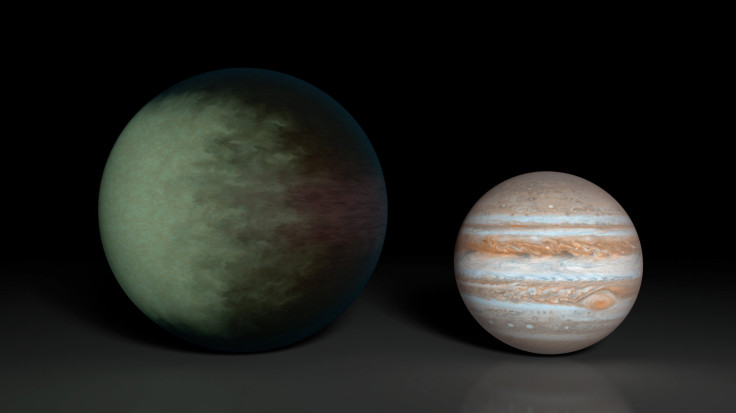Astronomers Map High Clouds On Jupiter-Like Alien World Beyond Our Solar System

For the very first time, astronomers have created a map of clouds on a planet located beyond our solar system, NASA announced, adding that the findings will help scientists study the atmospheres of planets that are similar to Earth in composition and size.
According to the space agency, astronomers used its Kepler and Spitzer space telescopes to map thick clouds on an exoplanet, which has a radius 1.5 times that of Jupiter, and is called Kepler-7b.
“By observing this planet with Spitzer and Kepler for more than three years, we were able to produce a very low-resolution 'map' of this giant, gaseous planet,” Brice-Olivier Demory of Massachusetts Institute of Technology and the lead author of a paper to be published in the Astrophysical Journal Letters, said in a statement. “We wouldn't expect to see oceans or continents on this type of world, but we detected a clear, reflective signature that we interpreted as clouds.”
Kepler-7b, which is marked by high clouds in the west and clear skies in the east, was one of the first alien planets among 150 exoplanets discovered by Kepler. Previous observations of Kepler-7b have revealed that the planet is so puffy that if it could somehow be placed in a tub of water, it would float.
Kepler’s observations helped astronomers create a rough map of Kepler-7b, showing a bright spot on its western hemisphere, but it was not enough to decide whether the bright spot originated from clouds or heat.
Spitzer used its ability to detect infrared light to answer the query. The telescope measured Kepler-7b's temperature, estimating it between 1,500 and 1,800 degrees Fahrenheit, which is relatively cool for a planet that orbits very close to its star. This observation led astronomers to determine that light from the planet's star is bouncing off cloud tops located on the west side of the planet.
“Kepler-7b reflects much more light than most giant planets we've found, which we attribute to clouds in the upper atmosphere,” Thomas Barclay, Kepler scientist at NASA's Ames Research Center in Moffett Field, Calif., said in the statement. “Unlike those on Earth, the cloud patterns on this planet do not seem to change much over time -- it has a remarkably stable climate.”
For more details, check out this technical paper, provided by the Massachusetts Institute of Technology.
© Copyright IBTimes 2024. All rights reserved.






















